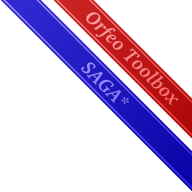QGIS is a great, free, geographic information system for the desktop.
Analytical capability to go with the user-friendliness of this software is provided by a plugin system interfacing to several external tools. We plan to add a common framework, so every tool will fit in, and all tools could be used either individually or chained together.
In particular, this project aims at the creation of a QGIS plugin that makes it possible to run the versatile System for Automated Geoscientific Analysis (SAGA GIS) modules from Quantum GIS. This plugin generates a GUI on-the-fly and runs the modules using the SAGA Python API, i.e. automates the process of information exchange between QGIS as a end-user interface and SAGA as an analytical tool.
Installation & Usage
While this software is in development, and may not yet meet your production needs, if you want to help testing the interface to SAGA, you'll need to install a recent version of QGIS and SAGA and then download two plugins using the built-in Plugin installer.
Have a look at the SAGA Interface HOWTO for longer installation and usage instructions. Thanks!
Feedback & Support
Please, don't hesitate to send your information, criticism or praise through any of the channels below:
- Issue tracker
- QGIS Mailing lists: users, developers
- Personal contact: e-mail, Google+
Development
If you are developer thinking of providing support for your processing library to QGIS, you may want to read the introductory Developer's Tutorial, the framework's API and/or the design document (a bit outdated, but still relevant). The framework is currently written in Python, but a port to C++ is planned.
In regards to QGIS, its C++ API, the PyQGIS "cookbook" and the developer's manual can be valuable resources.
Further information
See also the full table of contents of the wiki.
Initial funding for this project was provided by Google through the Summer of Code 2011 program.
*Up to 40%. Actual contents may vary. Soon: GRASS support.
